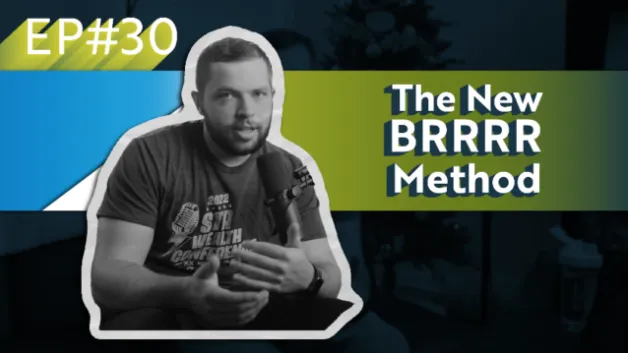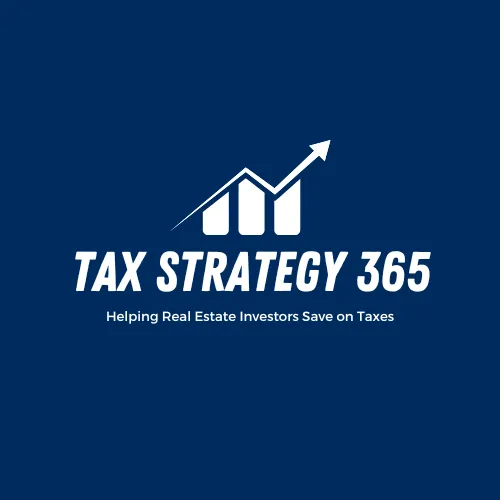Latest blogs and articles
Leading you to a better financial future.

The New BRRRR Method
The New BRRRR Method
Today, we're going to talk about the BRRRR method, and why you should add another step to the BRRRR method. We're going to talk about a new concept that I've never seen anybody ever talk about before, which is called equity stripping. And we're also going to talk about another concept that I've never seen anybody talking about before, which is a wherewithal pay problem. Let’s begin!
What is the BRRRR Method?
The BRRRR Method has been one of the most common wealth-building strategies out there when it comes to real estate. You are able to buy a property below FMV, add value to the property, get it rented out, potentially cash out refinance and get all of your money back to do it all over again.
Add step to the BRRRR Method
First, we must understand that when we buy a property, the timeframe between when we buy it and when we start renting it out, those costs have to be capitalized and depreciated. It's just a fancy term for you're not going to get your tax benefit immediately. You're going to get that benefit over a lifetime of the property.
If you depreciate something you don't get the benefit immediately - you get it stretched out over a period of years. And you also have to pay this thing called “depreciation recapture”.
When you're able to expense something, you get an immediate tax benefit for expensing that and you don't have to pay depreciation recapture because you never depreciated anything - you expensed it.
Let me show you an example: Let's say I bought a property June 1st and the property was ready to go August 1. I started renting it out August 1, and in between when I bought it and when I started renting it out, I had $30,000 worth of rehab costs. Well, if I'm able to do enough rehab, get the property permitted, get the water running, get all the utilities hooked up and get the property rent ready on July 1st (i.e. listing on Airbnb, VRBO or put a “for sale” or “for rent” sign out front), then my expenses might look like this
I have $15,000 in costs before July 1st, and
I have $15,000 of costs after July 1st
What does this mean? Well, this $15,000 before the property's rent-ready is going to be depreciated over the life of the asset and can't do anything about those costs. However, those costs that we incur after the property is available for rent can be expensed immediately.
Okay, so we talked about these costs, we're not going to get this benefit. For 27 and a half years, we're going to do $15,000 divided by 27 and a half, that's pennies, whereas this $15,000 that we spend after the property is available for rent can be expensed immediately against our marginal tax bracket.
Let's say I'm in a 40% tax bracket. I'm going to get that benefit of $6,000 in tax savings in this year as opposed to having to capitalize and depreciate it which I don't get as much of a benefit.
This is just adding a simple extra step to the BRRRR method.
Now, can you say the property is available for rent but it's still on studs or it's still getting framed? No, the property has to be ready for rent. But assuming you're able to do that, you're able to get all your permits and your occupancy, this is a great strategy by adding another step to the BRRRR method.
Equity Stripping
Let's dive into a concept called "equity stripping."
Equity stripping is about safeguarding your properties, especially if they have a lot of equity built up. When your properties have a hefty amount of equity, they become more attractive targets for lawsuits, creditors, or debtors.
To protect yourself, you can take steps to remove this equity from your properties. This often involves actions like refinancing or taking out loans against the property's value. By doing this, if you face a lawsuit, there's less for others to seize.
It's usually better to strip equity in your personal name rather than under a business because you can usually get better financing terms.
If you own properties in areas like California, Florida, or the Smoky Mountains where property values have shot up, consider moving some of that equity into newer properties. This helps spread out your risk.
I talked about this in a recent podcast where I discussed how spreading your investments across multiple properties can be safer than putting all your money into one property, even if it means putting smaller down payments on each.
Wherewithal to Pay Problem
The last conversation that gets brought up with this is what I call the “wherewithal to pay problem”. Here’s how it comes up with the BRRRR method:
Suppose you bought a property for $100,000 putting 20% down, you put $100,000 into it, and now the property is worth $300,000.
You then take a loan against the $300,000 value at 80% LTV for a total loan value of $240,000.
The property then goes up in value to $500,000 years later and you decide to take another loan out against it 80% LTV of $500,000 =$400,000. You then decide to sell the property less than a year later for $500,000
This is where the “wherewithal to pay problem” starts:
You sold the property for $500,000 but after paying realtor commissions of $30,000, the bank loan of $400,000 and other closing costs, you are left with $65,000 cash.
You have a capital gain taxed at 20% on the difference between $200,000 and $500,000 = $60,000 capital gain
All of your gross proceeds from that property sale will go towards your tax bill
Do not get stuck with this problem by tax strategizing around this event. You can 1031 exchange your property, accelerate depreciation and do things that are going to lower your tax bracket so you're not stuck with this wherewithal the pay problem.
The New BRRRR Method
Join my Facebook group with over 9,000 real estate investors!

Choose Your Journey to Tax Excellence
Journey 1
Building a Tax Advisory & Consulting Practice
Scale, streamline, and systemize your advisory business.
Turn compliance clients into year-round advisory opportunities while mastering operational efficiencies for sustainable growth. This track covers pricing, hiring, marketing, and client engagement essentials to help you build a practice you love.
WHAT YOU’LL LEARN:
Crafting solid engagement letters and pricing models.
Transforming compliance clients into year-round
partners.
Marketing
strategies that drive consistent growth.
Recruiting and training the right team to scale your business.
Bonus:A Power Checklist for the ultimate year-end tax planning session.
Journey 2
Tax and Legal Foundations: Core Strategies for All Levels
Master the fundamentals that drive financial success.
Perfect for business owners and advisors, this track delivers essential insights on asset protection, tax planning, estate strategies, and IRS compliance.
WHAT YOU’LL LEARN:
Unlock estate planning with Revocable Living Trusts.
Maximize retirement savings through Solo 401(k) plans.
Real estate strategies: Short-term, long-term, and self-rentals.
Learn asset protection that actually works.
Navigate IRS resolution with confidence and ease.
Journey 3
Advanced Insights: Unlock Complex Tax Strategies
Top-tier strategies for high-value clients.
Designed for experienced professionals, this track offers in-depth guidance on prime tax strategies, entity structuring, and payroll solutions. Gain the insights needed to handle complex business scenarios with confidence.
WHAT YOU’LL LEARN:
Report multi-entity structures with Forms 1065 & 1120S.
Maximize tax savings using Bonus Depreciation & Section 179.
Seamlessly relocate clients to tax-free states.
Navigate business sales and acquisitions smoothly.
Use 105 Plans to save clients on healthcare costs.

2024 Learn Like A CPA. All rights reserved.